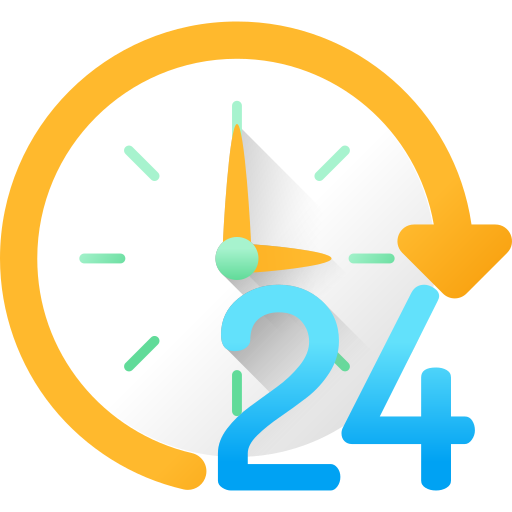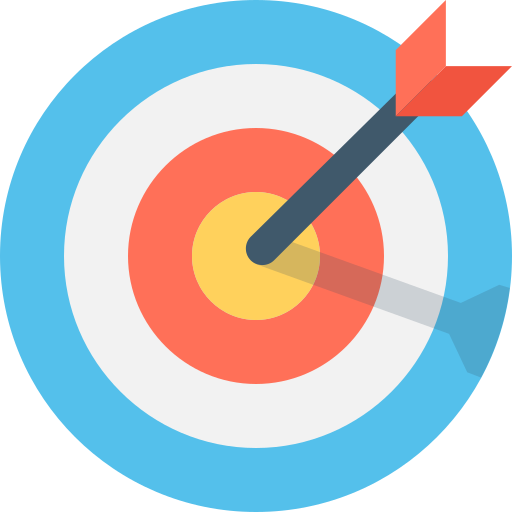IoT in Healthcare Market Size
The global IoT in healthcare market size was valued at $207.99 billion in 2025 and is projected to reach $685.80 billion by 2031, growing at a CAGR of 22.0% during the forecast period.
IoT in Healthcare Market Overview
The Internet of Things (IoT) in healthcare represents a transformative shift in how medical data is collected, analyzed, and utilized, significantly enhancing patient care and operational efficiencies. By integrating connected devices, healthcare providers can continuously monitor patients' vital signs remotely, allowing for timely interventions and personalized treatment plans tailored to individual health profiles. This capability not only improves patient engagement but also fosters proactive healthcare management, reducing the frequency of hospital visits and lowering overall healthcare costs.
Companies benefit from IoT by streamlining processes such as asset management and diagnostics, which enhances resource allocation and minimizes downtime. Moreover, the vast amounts of data generated by IoT devices enable data-driven decision-making, leading to improved outcomes and more efficient healthcare delivery. However, the successful implementation of IoT in healthcare also necessitates addressing challenges related to data security, interoperability, and regulatory compliance to fully leverage its potential for innovation and improvement in patient care.
IoT in Healthcare Market Dynamics
The IoT in healthcare market is expected to witness significant growth in the future due to the increased adoption of connected medical devices and mobile applications in healthcare, growing demand for remote patient monitoring and telemedicine solutions, and advancements in IoT technology facilitating better data management and patient care. However, the concerns over data security and privacy due to increased cyber threats, limited internet access, and high costs associated with the implementation of IoT infrastructure are restraining the growth of the market.
Furthermore, development of innovative IoT-connected smart devices for personalized healthcare, enhanced collaboration between health insurers and IoT technology for better underwriting processes, and expansion of telemedicine services had driven by IoT solutionsare the key trends propelling the IoT in healthcare market.
Increased Adoption of Connected Medical Devices and Mobile Applications in Healthcare is Driving the IoT in Healthcare Market
The increased adoption of connected medical devices and mobile applications in healthcare is significantly impacting the IoT in Healthcare market, by enhancing patient monitoring, improving outcomes, and streamlining healthcare operations.
• For instance, Philips launched its Remote Patient Monitoring System on October 3, 2024, which allows healthcare teams to monitor patients remotely, reducing hospital readmissions and improving care quality.
• Similarly, Medtronic introduced the MiniMed 670G Insulin Pump, the first FDA-approved smart insulin pump that automates insulin delivery based on real-time glucose levels, thereby enhancing glycemic control for diabetes patients.
• Another example is GE Healthcare's Vscan Extend, a portable ultrasound device that provides physicians with immediate access to patient data from anywhere, facilitating timely diagnostics.
Furthermore, government initiatives are also playing a role;
• For example, various health departments are promoting telehealth solutions and remote monitoring technologies to improve healthcare access and efficiency.
These developments underscore how the integration of IoT technologies in healthcare is driving innovation and improving patient care across the sector.
By End User, the Hospitals and Clinics Segment is projected to be the Largest Segment in the IoT in Healthcare Market
Hospitals and Clinics is the largest segment in the IoT in healthcare market, driven by the increasing adoption of connected technologies that enhance operational efficiency and patient care.
• For instance, in January 2024, Bupa, a British healthcare provider, made a substantial investment in IoT and artificial intelligence infrastructure, focusing on improving patient outcomes and streamlining operations.
• Additionally, Microsoft announced a collaboration with various healthcare organizations in March 2024 to integrate AI into healthcare practices, which includes utilizing IoT devices for better patient management.
Government initiatives also support this growth;
• For example, various health departments in North America have been promoting telehealth services and remote patient monitoring technologies as part of their response to the COVID-19 pandemic.
This has led to a rise in the usage of telehealth solutions and e-prescribing systems across hospitals, significantly boosting the demand for IoT applications. With the growing need for real-time data analysis and improved patient experiences, hospitals are increasingly investing in IoT technologies to enhance their service delivery, making this segment a key driver of market expansion.
By Geography, North America Holds the Largest Share in the Market Revenue
North America holds the largest share of the IoT in healthcare market, driven by several key factors, including advancements in technology, government support, and the need for improved patient care. The region is home to numerous major players and has a sophisticated healthcare infrastructure that facilitates the adoption of connected medical devices and applications.
• For example, Honeywell International Inc. announced strategic collaborations in September 2022 to enhance patient outcomes through advanced digital technologies, emphasizing the importance of IoT in improving healthcare delivery.
• Additionally, the FDA approved Epitel's wireless EEG sensor in 2021, enabling real-time monitoring of brain activity in emergency rooms, showcasing how IoT devices are becoming integral to patient care.
Government initiatives also play a crucial role;
• For instance, bipartisan legislation introduced in February 2022 aimed to address healthcare-related privacy threats while promoting the use of IoT solutions.
The market size for IoT in healthcare was estimated at USD billion in and is projected to grow significantly, this growth is driven by increasing telehealth usage and the rising prevalence of chronic diseases, further highlighting the critical role of IoT technologies in enhancing healthcare services across North America.
Key Target Audience:
• Healthcare Providers
• Patients
• Medical Device Manufacturers
• Healthcare IT Companies
• Government Agencies
List of the Key Players Profiled in the Report Includes:
• GE Healthcare
• Siemens Healthineers
• Philips Healthcare
• Apple
• Samsung
• Microsoft
• Medtronic
• Boston Scientific
• Garmin
• Fitbit
Recent Developments:
• In June 2025, Medtronic released new clinical data on its MiniMed 780G system, a next-generation, IoT-enabled insulin pump combined with Continuous Glucose Monitoring (CGM) technology. The device is used for automated insulin delivery in people with Type 1 and Type 2 diabetes.
• In April 2025, GE HealthCare unveiled Freelium, a next-generation sealed MRI magnet platform that supports deployment in diverse settings, including smaller clinicshighlighting how portable imaging tech leverages IoT-style design for broader access. Additionally, at HIMSS 2025, GE demonstrated several AI-enabled, mobile-ready innovations, including secure cloud-connected tools for patient monitoring and care coordination during remote procedures.
• In May 2025, Apple embedded its iPad along with the MyChart Bedside app into every patient room at Emory Healthcare. This integration turns tablets into bedside IoT endpoints, enabling patients to access records, order meals, and communicate securely with staff.
Market Segmentation:
The research report includes in-depth coverage of the industry analysis with size, share, and forecast for the below segments:
Market by, Component:
• System and Software
• Devices
• Services
Market by, Application:
• Clinical Imaging
• Clinical Operations and Workflow Optimization
• Drug Development
• Fitness and Measurement
• Medical Management
• Operations and Workflow Management
• Patient Monitoring
• Remote Scanning
• Sample Management
• Telemedicine
• Other Applications
Market by, End User:
• Clinical Research Organizations
• Health Insurance Companies
• Hospitals & Clinics
• Patients
• Physicians
• Research and Diagnostic Laboratories
• Other End Users
Market by, Connectivity Technology:
• Bluetooth
• Cellular
• LPWANs
• RFID
• Wi-Fi
• Zigbee
Market by, Geography:
The IoT in healthcare market report also analyzes the major geographic regions and countries of the market. The regions and countries covered in the study include:
• North America (The United States, Canada, Mexico), Market Estimates, Forecast & Opportunity Analysis
• Europe (Germany, France, UK, Italy, Spain, Rest of Europe), Market Estimates, Forecast & Opportunity Analysis
• Asia Pacific (China, Japan, India, South Korea, Australia, New Zealand, Rest of Asia Pacific), Market Estimates, Forecast & Opportunity Analysis
• South America (Brazil, Argentina, Chile, Rest of South America), Market Estimates, Forecast & Opportunity Analysis
• Middle East & Africa (UAE, Saudi Arabia, Qatar, Iran, South Africa, Rest of Middle East & Africa), Market Estimates, Forecast & Opportunity Analysis
The report offers insights into the following aspects:
• Analysis of major market trends, factors driving, restraining, threatening, and providing opportunities for the market.
• Analysis of the market structure by identifying various segments and sub-segments of the market.
• Understand the revenue forecast of the market for North America, Europe, Asia-Pacific, South America, and Middle East & Africa.
• Analysis of opportunities by identification of high-growth segments/revenue pockets in the market.
• Understand major player profiles in the market and analyze their business strategies.
• Understand competitive developments such as joint ventures, alliances, mergers and acquisitions, and new product launches in the market.
Table Of Content
1 Market Introduction
1.1 Market Definition
1.2 Research Scope and Segmentation
1.3 Stakeholders
1.4 List of Abbreviations
2 Executive Summary
3 Research Methodology
3.1 Identification of Data
3.2 Data Analysis
3.3 Verification
3.4 Data Sources
3.5 Assumptions
4 Market Dynamics
4.1 Market Drivers
4.2 Market Restraints
4.3 Market Opportunities
4.4 Market Challenges
5 Porter's Five Force Analysis
5.1 Bargaining Power of Suppliers
5.2 Bargaining Power of Buyers
5.3 Threat of New Entrants
5.4 Threat of Substitutes
5.5 Competitive Rivalry in the Market
6 Global IoT in Healthcare Market by, Component
6.1 Overview
6.2 System and Software
6.2.1 Analytics Layer
6.2.2 Database Layer
6.2.3 Network Layer
6.3 Devices
6.3.1 Implantable Sensor Devices
6.3.2 Stationary Medical Devices
6.3.3 Wearable Devices
6.4 Services
7 Global IoT in Healthcare Market by, Application
7.1 Overview
7.2 Clinical Imaging
7.3 Clinical Operations and Workflow Optimization
7.4 Drug Development
7.5 Fitness and Measurement
7.6 Medical Management
7.7 Operations and Workflow Management
7.8 Patient Monitoring
7.9 Remote Scanning
7.10 Sample Management
7.11 Telemedicine
7.12 Other Applications
8 Global IoT in Healthcare Market by, End User
8.1 Overview
8.2 Clinical Research Organizations
8.3 Health Insurance Companies
8.4 Hospitals & Clinics
8.5 Patients
8.6 Physicians
8.7 Research and Diagnostic Laboratories
8.8 Other End Users
9 Global IoT in Healthcare Market by, Connectivity Technology
9.1 Overview
9.2 Bluetooth
9.3 Cellular
9.4 LPWANs
9.5 RFID
9.6 Wi-Fi
9.7 Zigbee
10 Global IoT in Healthcare Market by, Geography
10.1 Overview
10.2 North America
10.2.1 US
10.2.2 Canada
10.2.3 Mexico
10.3 Europe
10.3.1 Germany
10.3.2 France
10.3.3 UK
10.3.4 Italy
10.3.5 Spain
10.3.6 Rest of Europe
10.4 Asia Pacific
10.4.1 China
10.4.2 Japan
10.4.3 India
10.4.4 South Korea
10.4.5 Australia
10.4.6 New Zealand
10.4.7 Rest of Asia Pacific
10.5 South America
10.5.1 Brazil
10.5.2 Argentina
10.5.3 Chile
10.5.4 Rest of South America
10.6 Middle East & Africa
10.6.1 UAE
10.6.2 Saudi Arabia
10.6.3 Qatar
10.6.4 Iran
10.6.5 South Africa
10.6.6 Rest of Middle East & Africa
11 Key Developments
12 Company Profiling
12.1 GE Healthcare
12.1.1 Business Overview
12.1.2 Product/Service Offering
12.1.3 Financial Overview
12.1.4 SWOT Analysis
12.1.5 Key Activities
12.2 Siemens Healthineers
12.3 Philips Healthcare
12.4 Apple
12.5 Samsung
12.6 Microsoft
12.7 Medtronic
12.8 Boston Scientific
12.9 Garmin
12.10 Fitbit
Report Details
| SKU Code | : DI2609 |
| Industry | : Healthcare |
| Region | : Global |
| Tables | : 222 |
| Format | : Electronic PDF |
| Published | : 2025 |
Choose License Type
Why Diligence Insights?
-

24/7 Research Support
We understand the various needs of our customers and remain always flexible in our approach. And we have a 24X7 client engagement team to ensure the best customer experience.
-

Tailor-Made Values
We consider each and every client’s business issues unique and exhibit precise solutions befitting your business goals and expectations.
-

Data Accuracy and Reliability
We offer a 360-degree view of the market to generate high standards and comprehensive data.
-

Customer Satisfaction
At Diligence Insights, we are committed to offering high-quality market research reports to our esteemed clients and focus on providing innovative solutions.
-

Information Security
We stand by the information security policy and stick to keeping your business information safe and secure.
